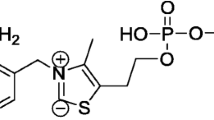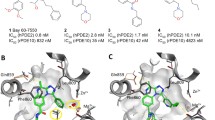Abstract.
Catalysis of proton abstraction from nonacidic carbon atoms adjacent to a carbonyl or carboxylate group is a fundamental reaction in enzymology that has been extensively studied during the last few decades. Enzymes catalyzing these reactions, which normally involve labile enolic intermediates, need to overcome large pK a differences between the reacting groups as well as high intrinsic free-energy barriers. Here, we present an overview of results from recent computer simulation studies of keto-enol isomerization reactions catalyzed by the enzymes glyoxalase I, triosephopsphate isomerase and ketosteroid isomerase. For all three enzymes it is found that electrostatic stabilization of the transient enolate intermediates, either by charge–charge interactions or by hydrogen bonding, accounts for the main part of the activation free-energy barrier reduction. Another catalytic effect observed in all cases is the reduction of the reorganization energy by the enzyme active site. Some other factors that have been proposed to be important for these reactions are also discussed and evaluated.
Similar content being viewed by others
Author information
Authors and Affiliations
Additional information
Received: 3 January 2002 / Accepted: 13 May 2002 / Published online: 29 July 2002
Rights and permissions
About this article
Cite this article
Feierberg, I., Åqvist, J. Computational modeling of enzymatic keto-enol isomerization reactions. Theor Chem Acc 108, 71–84 (2002). https://doi.org/10.1007/s00214-002-0365-7
Issue Date:
DOI: https://doi.org/10.1007/s00214-002-0365-7




